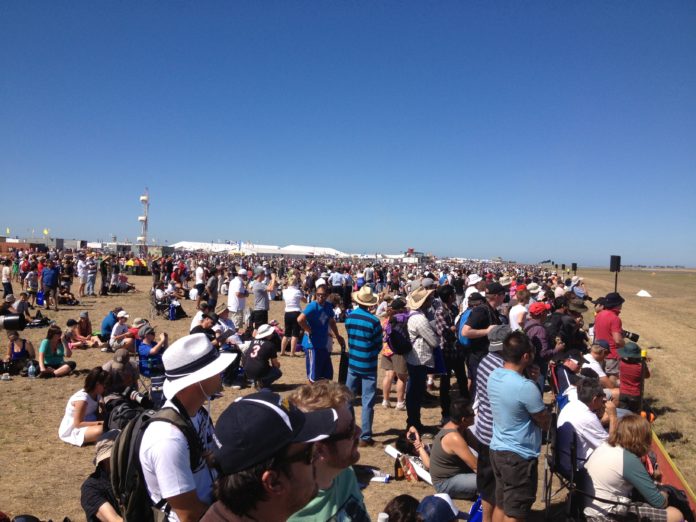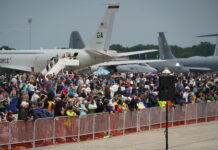In the heart of air show season, activity picks up – not only on airport ramps and venues but throughout the entire industry. Increased activity means increased distractions. A gas truck is late to a performer’s plane, a new policy causes friction in the air show community, construction begins on a major road leading to a show site, or a commercial airliner disrupts a show. Distractions can occur in many forms, and though they must always be handled as they come and go, they remain only distractions. A distraction is defined as “a thing that prevents someone from giving full attention to something else,” and we should all be cognizant of what that “something else” is. Stated another way, what is one thing that all air show professionals should have near the top of their mind? The answer: the spectators.
The beating heart of the air show industry will always be the spectators who attend air shows. Whether they come to see extraordinary aerial displays or rare and historical aircraft or just to spend a few days in the sun at an event, every single spectator is the reason that every air show professional has the privilege of doing what they do. Air shows are an opportunity to showcase aviation in a substantially different way than most people think of aviation — as a way to get from point A to point B. The ultimate goal is to provide the best experience to attract more spectators and to keep current spectators pleased with the product that we provide.
We frequently talk about the importance of safety and tactical means to increase safety, but we often miss the opportunity to discuss the reasons why we place such emphasis on it. Safety is a critical element to the overall appeal of air shows. Accidents and incidents – in front of the crowd line AND behind it — leave a negative impact on a spectator’s perception of the show, and that perception has a direct correlation to their decision whether to attend a future air shows.. Conversely, positive experiences will likely enhance a spectator’s opinion of air shows. Therefore, it is in the air show community’s best interest to prioritize safety as one of many pillars vital to protecting its longevity. Happy spectators can directly impact its success.
The Butterfly Effect is a scientific theory that describes how small actions can cause significantly larger effects down the line. The theory postulates that an action as insignificant as a butterfly flapping its wings can set off a chain of events that leads to the creation of a hurricane. Apply this theory to the air show industry, and a reasonable person could state that a minor event at one air show could have a profound impact on the entire industry. The event could be as small as a performer giving a brief word of encouragement to a young fan, a possible first step in that fan’s becoming the air show star of tomorrow.
It is for these reasons the air show industry has gone – and will continue to go to such great lengths to protect spectators. We have enacted policies and regulations that may cause friction within the air show community, but the ultimate goal of protecting spectators remains constant throughout. Visiting performers from Europe and abroad are often baffled by our insistence against maneuvers that point aerobatic energy toward the crowd, the strength and rigidity of our peer evaluation programs and the setback distance minimums that we have in the United States and Canada. However, when you consider the fact that we have not had a spectator injured at an air show in over 60 years, the rationale for these rules becomes clear.
Our industry is not the only one that subscribes to this maxim. A cursory look at the headlines in the fall will tell you that the National Football League frequently talks about “protecting the game.” For even the NFL knows that if they lose sight of what is at the heart of their industry, then their industry will quickly fall to the wayside.
As we enter the back half of the air show season, I would encourage us all to maintain our focus on the one element that bonds all members of ICAS: the spectator. Your plane will still need gas, regulators will still regulate, and construction on that access road will continue. Distractions will need to be addressed, while at the same time keeping our eye of the big picture: building and sustaining a vibrant air show industry.








